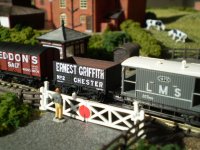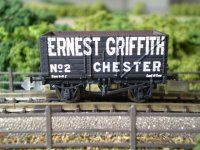The walled city of Chester, standing on the River Dee just a few miles from the Welsh border,
has been a major trading post since the days of the Romans. Fast-forward eighteen hundred years
or so and the shivering legionaries have passed into the history books, along with
the Saxons and the Vikings and the rest of their looting and pillaging kind. But Chester is still a
trader's town, and the latest generation of traders and money-makers have technology the Romans
couldn't have dreamed of. Goods move on the new-fangled iron road now, getting from A to B in hours
instead of days, and it doesn't take long for the rail network to make its way to the old Roman
city by the river. Eventually it becomes quite a railway hub, with the London & North
Western's line from Euston to the port of Holyhead crossing the Great Western's route from
Paddington to Birkenhead Woodside. Adjoining the bustling joint station of Chester General
is a busy goods yard, and like all goods yards it has a selection of local coal merchants
setting up shop alongside the sidings. One of these is Ernest Griffith, proud proprietor of a
small but well-respected business bearing his name, and one of his proudest moments would
have been taking delivery of a brand new wagon with his name painted large upon it. Now
everyone could see that Ernie was the fastest coalman in the West.
Coal isn't big business any more, any of course, and Ernest Griffith and his kind long ago joined
the Romans in the pages of history. But you can bring them back on your layout with our wagon.
This model, made for us by Mathieson of York, represents a wagon built to the 1911 standards of the
Railway Clearing House, and so could have been seen in both the pre-grouping and the Big Four
eras of railways in Britain, and of course also on modern heritage railways.
Please note that a load is not included.
|




